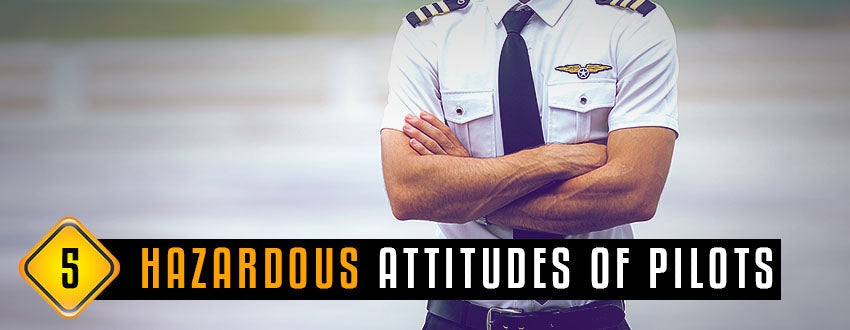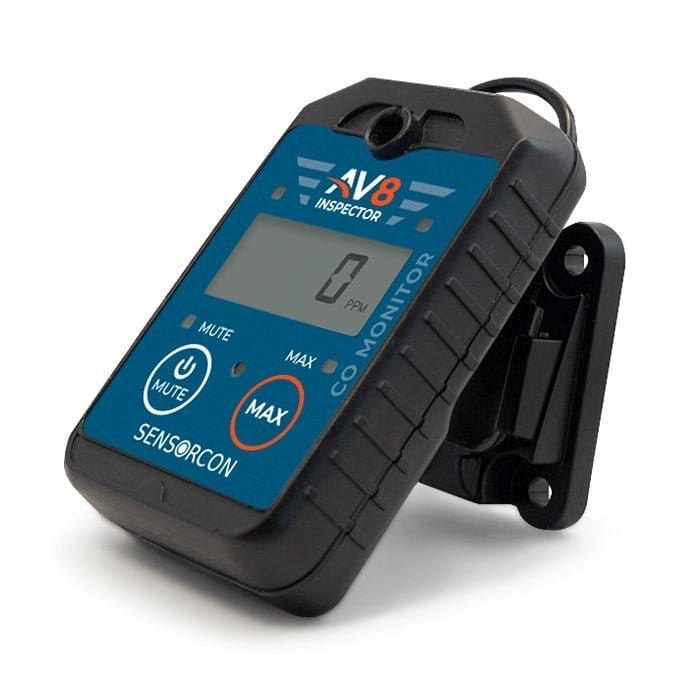Does this sound familiar? You’re at the airfield and were expecting to be able to fly today, but winds are starting to kick up and a storm is rolling in. As you and the other pilots congregate in the hanger to chew the fat and wait for conditions to improve, one lone pilot completes his pre-flight and starts taxiing out to the runway.
We’ve all seen those dangerous pilots who are just accidents waiting to happen. We shake our heads as we watch them make reckless decisions. Over drinks we and our fellow pilots weigh the odds of how long that reckless pilot will go before they inevitably cause an accident.
Okay, we know what you’re thinking – “I would never be ‘that guy.’ I know better than to do something so out of line.” We all like to think of ourselves as safe, responsible pilots, but are we really, or is there a chance that we too are a pilot error accident just waiting to happen?
Listen: We get it – none of us enjoy looking in the mirror and analyzing our potential shortcomings, but with the FAA estimating that 75% of all aviation accidents are caused by human factors, it’s time to rip off the bandage and get honest.
Still not convinced? Our safety and our passengers’ safety could be on the line. So, let’s suck it up, face the music, and find out what hazardous – and potentially deadly – attitudes we too may be unwittingly bringing to the cockpit.
How many hazardous attitudes has the FAA identified?
One of the most important critical thinking skills we develop as pilots is something called aeronautical decision making (ADM). The FAA describes ADM as “a systematic approach to the mental process used by airplane pilots to consistently determine the best course of action in response to a given set of circumstances.”
In a perfect world, every pilot would correctly use the ADM for decision making and human error accidents would be virtually non-existent.
Sadly, the FAA’s aviation accident stats show that this is not the case. An analysis of pilot error accidents revealed commonalities which the FAA studied. One of their findings was that pilot attitude impacted the quality of decisions that pilots made.
Bottom line: our attitudes can cause us to make faulty or reckless decisions that lead to accidents.
So what can we do about this potential problem? It’s simple. The FAA has done most of the work for us by identifying 5 hazardous attitudes that can throw a wrench in our decision-making process.
All we must do is learn to recognize each of these hazardous attitudes, then evaluate ourselves and see what changes we may need to make to improve our aeronautical decision-making capacity.
Let’s meet these 5 attitudes so we can see what they look and sound like in the real world.
Hazardous Attitude #1: Anti-Authority
Watch any group of two-year-old’s or teens and you will see a hefty dose of an anti-authority attitude. In pilots, an anti-authority attitude shows up in a couple of ways. Some anti-authority pilots simply don’t like being told what to do and they grate against any authority figure that attempts to control their actions.
“Don’t tell me what to do,” an anti-authority pilot will say as they proceed to ignore directions, instructions and advice.
A second, more subtle display of the anti-authority mindset is the pilot who skips steps and skims over or ignores portions of checklists. This pilot may also violate regulations, break the rules and not follow proper procedures. This pilot may think that these checks and balances are an unnecessary waste of time and will vagrantly disregard the authority of the person or agency who put them in place.
Hazardous Attitude #2: Impulsivity
You know impulsivity – it’s the reason that grocery stores have all the candy bars and other small tempting items lining the checkout lines. Did you know that they are even referred to as “impulse items” in retail lingo?
On a pilot, impulsivity is somewhat insidious because it can be hard to differentiate from a healthy level of quick response to changing situations. After hours and hours of training to take prompt decisive action when presented with a dangerous scenario like engine failure, wind gusts, or a stall warning, we have all but left indecision by the wayside.
An impulsive pilot, however takes this quick response to the next level. Instead of going through an appropriate aeronautical decision-making process for any given situation, the focus of the impulsive pilot is on speed.
“Do it quickly,” is the phrase that the FAA uses to explain the impulsive pilot’s mentality. The problem is that by shifting the focus from making a safe, correct, timely decision to simply taking action quickly, the impulsive pilot falls prey to acting on the first idea that pops into their head regardless of whether or not it is the best choice.
Hazardous Attitude #3: Invulnerability
When you were a teen or 20-something, who did you think that accidents, illness and tragedy happened to? Other people, right? The next time you see a news anchor interview someone who lost their home to a flood, hurricane, or tornado, notice how that person says that they heard about it happening to others, but they never thought that it would happen to them.
This attitude of invulnerability can be dangerous in the cockpit. A pilot who believes him/herself to be invulnerable will think, “It won’t happen to me.” Yes, other pilots get into accidents, other pilots crash, other pilots experience negative consequences for their actions, but a pilot with an attitude of invulnerability thinks that they are somehow immune to or above these repercussions.
Hazardous Attitude #4: Macho
A macho attitude takes the invulnerability attitude and adds a heaping dose of ego on top. This is the quintessential “hold my beer and watch this” mindset. A pilot who is caught up in a macho attitude focuses on proving their superiority. They are constantly taking risks and actions to impress others and to prove themselves. As a side-note, male machismo is well-known, but female pilots should check in with themselves as well because they too may get caught up in feeling like they have something to prove. This can lead to decisions made from a place of macho rather than rational thought and consideration of the risks.
Hazardous Attitude #5: Resignation
One of the key tenants of flight is to always fly the plane. If you are the pilot in charge, be in charge. You are responsible for your actions and your decisions matter. Some pilots develop a fatalistic attitude of resignation. This pilot says, “What’s the use?” They think that whatever is going to happen will happen no matter what and that their actions don’t make a great deal of difference in the outcome. The danger of this attitude is that it causes the pilot to underestimate the importance of continuing to fly the plane. If you believe that whatever is going to happen will happen, it is easy to give up when things get rough.
Which hazardous attitude do I have?
Now we know what the 5 hazardous attitudes look and sound like, take the next step and find out which of the attitudes you are more prone to adopt.
Look, none of us are perfect, and as responsible as we try to be, we are only human and can fall into a hazardous attitude trap without realizing it.
| Name | Description | Antidote |
| Antiauthority | "Don't tell me..." | Follow the rules. |
| Impulsivity | "Do something quickly!" | Not so fast-think first |
| Invulnerability | "It won't happen to me...." | It could happen to me. |
| Macho | "I can do it." | Taking chances is foolish. |
| Resignation | "What's the use?" | I'm not helpless. |
Possible Reasons Causing These Attitudes
A major factor in causing these hazardous attitudes can at times be related to not properly applying the "IM SAFE" checklist prior to flight.
- I - Illness: Flying while you're not feeling well is not simply uncomfortable, it can also be dangerous and impact your ability to safely operate the aircraft.
- M - Medication: Certain drugs can cause adverse reactions that might jeopardize flight safety.
- S - Stress: Stress can affect judgment. Acute stress is short-term, like an upcoming exam. Chronic stress lasts longer due to extreme emotional pressure or trauma.
- A - Alcohol: 14 CFR §91.17 prohibits the operation of an aircraft within 8 hours of drinking, having an alcohol concentration of 0.04% or more, or having lingering effects.
- F - Fatigue: Fatigue causes loss of concentration, impaired coordination, and difficulty communicating.
- E - Emotions: If feeling angry, depressed, or impatient, flying should be avoided.
How to fix a hazardous attitude
The bottom line is this – as humans, we are all susceptible to developing hazardous attitudes that can do us a dangerous disservice in the cockpit. Once we recognize these attitudes in ourselves, we can take steps to offset them.
Respect authority
Did you find out that you have anti-authority tendencies? Remind yourself that many rules, regulations, procedures and checklists were implemented as a response to a real-life accident that cost a fellow pilot his or her life. Respect that pilot by giving authority figures a chance.
Think before acting
Prone to impulsivity? Acknowledge your first instinct, then consciously choose to go through the appropriate decision-making process and see if your first instinct is proven right or if there is a better option out there.
Acknowledge your humanity
Read and listen to interviews with all the pilots who lived to tell about their accidents and near-misses. They thought it couldn’t happen to them, but it did. Remind yourself that you are them and that you are not invulnerable to accidents and tragedy.
Drop the macho mindset
Let go of the need to impress by making ill-advised choices and taking reckless actions for the sake of showing off. It just isn’t worth it.
Fly the plane
It’s an oldie, but a goodie. You are the pilot. What you do matters. There is no place for resignation in the cockpit. No matter what happens, own it, respond to it, and continue to fly the aircraft.
Suggested Reading
Learn more about aviation risk management in the FAA Pilot's Handbook of Aeronautical Knowledge FAA-H-8083-25B
ASA We Have a No Crash Policy - A must-have for every pilot’s bookshelf, buy “We Have a No Crash Policy!” for an entertaining take on a very serious subject.
Learn More About Real Events
Learning about the mistakes of the past can help us to avoid repeating them int he future. Check out our article: 8 Preventable Airplane Disasters (Avoid Making These Fatal Mistakes)














